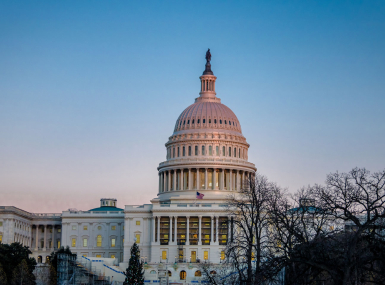Senate and House reintroduce legislation to strengthen the LIHTC
Author
Upcoming Events
Related News

Key Takeaways
On May 11, the Affordable Housing Credit Improvement Act (AHCIA) of 2023 (S. 1557; H.R. 3238) was reintroduced by Sens. Maria Cantwell (D-Wash.), Todd Young (R-Ind.), Ron Wyden (D-Ore.), Marsha Blackburn (R-Tenn.), and Reps. Darin LaHood (R-Ill.), Suzan DelBene (D-Wash.), Brad Wenstrup (R-Ohio), Don Beyer (D-Va.), Claudia Tenney (R-N.Y.) and Jimmy Panetta (D-Calif.).
Under the Low-Income Housing Tax Credit (LIHTC), the federal government issues tax credits to state governments, who then distribute the credits to private developers of affordable rental housing projects through their state housing agencies.
The AHCIA would effectively strengthen the LIHTC through:
- Increasing the number of credits available to states by 50 percent for the next two years;
- Making the temporary 12.5 percent increase in tax credits available for low-income housing secured in 2018 permanent;
- Decreasing the amount of private activity bonds needed to secure Housing Credit funding from 50 percent to 25 percent; and
- Codifying protections for veterans and victims of domestic and dating violence by formally adopting within the tax code IRS guidance and protections under the Violence Against Women Act (VAWA).
For more information on the AHCIA:
In July 2022 at the NACo Annual Conference, counties passed a resolution in support of passing the AHCIA that was introduced last Congress. While counties are not direct recipients of LIHTC, it is an important tool to stimulate private investment in the production of affordable housing.
As counties continue to find solutions to addressing our nation’s growing housing affordability and inventory crisis, counties urge federal lawmakers to enact legislation, such as the Affordable Housing Credit Improvement Act, to promote housing affordability and stability for our nation’s residents.
Related News

Counties and Railroads: Shared Priorities for the Next Surface Transportation Bill
County leaders from across the country have a vital opportunity to ensure their infrastructure priorities are front and center.

House reintroduces bipartisan legislation to level playing field for rural communities
House reintroduced the Rural Partnership and Prosperity Act, bipartisan legislation intended to advance economic development in rural counties and overcome barriers to obtaining federal funding and resources.
Featured Initiative
NACo Housing Task Force
(2022-2023) NACo’s Housing Affordability Task Force examined housing challenges and highlighted county-led solutions to address the housing affordability and inventory crisis. The task force identified intergovernmental and public-private strategies to enhance housing affordability and stability.


